Mastering the Simple Ride in Kiteboarding
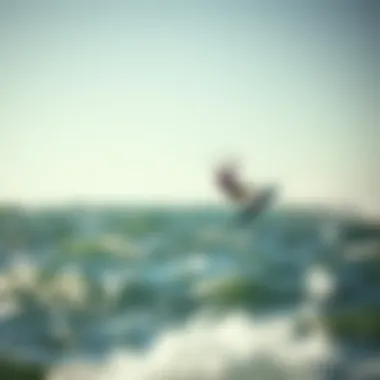
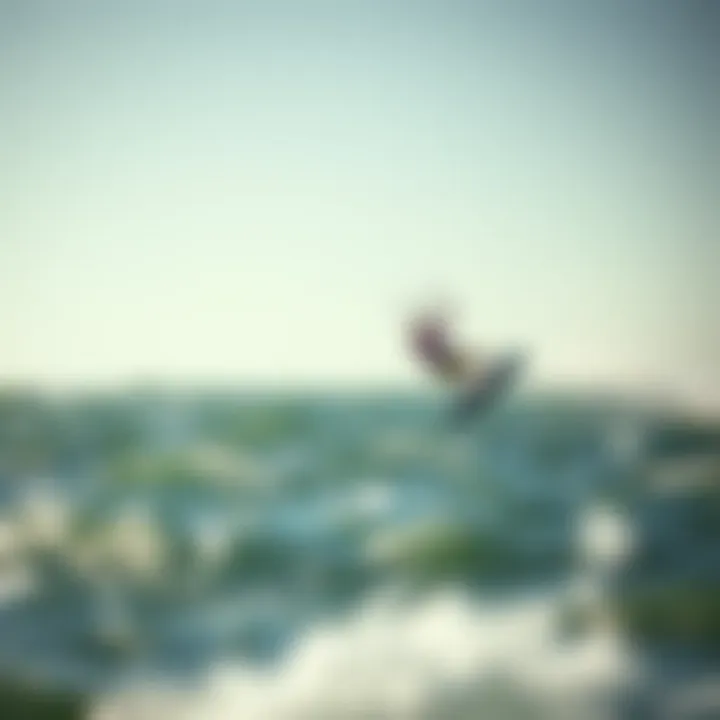
Intro
Kiteboarding, often seen as a thrilling blend of surfing and paragliding, requires a certain finesse to truly appreciate its art. Many enthusiasts are drawn to the adrenaline rush that comes with harnessing the wind and skimming across the water. However, there’s a beauty in the simplicity of a ride that many overlook. What if, instead of complex tricks and maneuvers, we focused on mastering the fundamentals? This article takes a closer look at how embracing a straightforward style can lead to a more enjoyable and fulfilling experience on the water.
By breaking down the essential gear and techniques, both novices and seasoned kiteboarders can gain insights into the art of the simple ride. Let’s navigate through the must-haves in equipment, spotlighting the latest innovations, and delve into the techniques that lay the foundation for a smooth ride. It’s not just about the thrill; it’s about the connection with the elements, riding the waves, and enjoying the moment.
Next, we’ll explore the vital equipment insights that serve as the bedrock for any kiteboarding adventure.
The Essence of a Simple Ride
Embrace the straightforward. In kiteboarding, simplicity can serve as a steady backbone for both novices and seasoned riders. When one navigates the water with grace rooted in simple techniques, many distractions give way to pure enjoyment of the ride. Simplifying the process not only fosters confidence but also builds a foundation upon which more complex maneuvers can thrive. The essence of a simple ride emphasizes clean execution, clarity of purpose, and an intuitive understanding of one’s surroundings.
Defining Simplicity in Kiteboarding
Simplicity in kiteboarding is often misinterpreted. It's not simply about ease; it’s about mastery over the basics. Picture a well-balanced kite position, gently held within an appropriate wind range. This ideal captures the heart of a simple ride. Some may assume that simplicity implies a lack of skill, yet it actually signifies a high level of proficiency in maintaining control.
A straightforward ride essentially merges various fundamental aspects of kiteboarding:
- Body stance: Keeping low with knees slightly bent enhances stability.
- Kite position: Holding the kite at 10 o’clock or 2 o’clock for effortless pulls.
- Board control: Smooth transitions minimize turbulence as you glide.
When each of these elements flows together seamlessly, one can ride with minimal effort, allowing space for joy and presence. Simplicity, therefore, isn’t about shortchanging the experience. It's about honing in on what truly matters to create sheer fluidity on water.
Why Simple Rides Matter
The significance of simple rides in kiteboarding cannot be overstated. They serve as the gateway to a more profound exploration of the sport, ushering riders into a world where advanced skills can flourish. Here are several compelling reasons why achieving a simple ride is essential:
- Boost Confidence: Facing the challenges of kiteboarding with fundamental techniques breeds assurance, particularly for those just starting.
- Enhance Learning: Mastering the basics allows riders to absorb new skills more effectively in a logical progression.
- Reduce Risks: Simplicity minimizes the chances of mishaps, making for safer experiences, especially in changing weather conditions.
- Create Enjoyment: Without the weight of complexity, riders can savor every moment spent on the water, reinforcing a love for kiteboarding.
In kiteboarding, simplicity transforms the experience from chaos into calm. It allows riders to connect deeply with nature while enjoying the thrill the sport has to offer. Ultimately, a simple ride isn't merely a starting point; it's a philosophy for embracing the ocean and the wind.
Basic Techniques for a Smooth Ride
When one thinks about kiteboarding, the excitement of rushing across the water often overshadows the fundamental techniques that can enhance one’s experience. The Basic Techniques for a Smooth Ride serve as the cornerstone for both beginners and experienced kiteboarders striving for coherence amid the exhilarating chaos of the sport. Mastery of these techniques not only lays the groundwork for future maneuvers but also ensures a safer, more enjoyable ride.
Body Positioning and Balance
Your body is the core of kiteboarding; the way you position it can make or break your ride. Proper stance involves aligning your head, hips, and feet while maintaining a slight bend in the knees. This stance places you in a balanced and centered position over your board, a critical factor in maintaining control.
- Feet Placement: Keep your feet shoulder-width apart. This positioning helps distribute your weight evenly. Too wide or too narrow, and you'll quickly find yourself losing balance.
- Knees Bent: Bending your knees allows for your body to absorb the energy of the water’s surface, welcoming the ride like a friend rather than fighting against it.
- Back Straight: Try to keep your back straight. A common pitfall occurs when riders lean too far forward or backward, leading to unnecessary strain and instability.
Good balance also means reading your body’s response to the wind and water. If your weight shifts too much to one side, counter it. Use small weight adjustments to stay stable. Think of your body as a pendulum, requiring fluidity rather than rigidness for optimal movement.
Effective Kite Control
Kiteboarding is as much about your kite as it is about your board. Effective kite control prevents wild swings and delivers precision in your movements.
- Launch and Land: Always strive to launch and land your kite correctly. Keep your lines untangled and watch the wind direction. A well-executed launch is like a good first step in dance.
- Steering Techniques: Use your back hand to steer rather than over-relying on the front hand. This allows your kite to move laterally across the wind window smoothly, a must for maintaining speed.
- Power Control: Learn to manage the amount of power your kite generates. Pulling too hard can lead to unwanted acceleration, making you lose your grip on the ride. Instead, find a rhythm between pulling and letting go, like strumming a guitar.
Kite control enhances your ability to ride efficiently, and it becomes second nature with practice. Do not underestimate the impact of a well-controlled kite; it opens the door to a world of possibilities on the water.
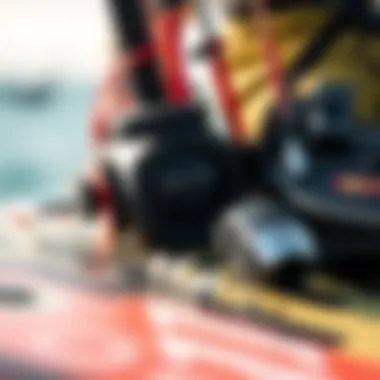
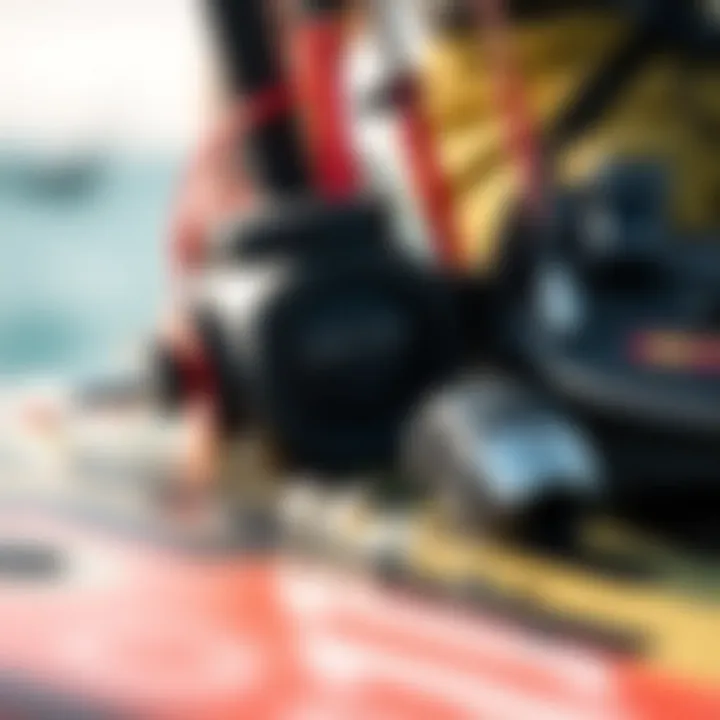
Understanding the Wind Dynamics
Wind is an unseen yet powerful companion in kiteboarding. Grasping its nuances provides an advantage that few novice riders recognize.
- Wind Window: Familiarize yourself with the concept of the wind window—a three-dimensional space in which your kite flies. Understanding this allows you to position your kite effectively for optimal lift and speed.
- Wind Strength and Direction: Certain spots have unique wind patterns. Observe how wind behaves over different terrains, asking questions like:
- Respect the Variability: Weather conditions can be fickle. Always check local forecasts and be mindful of changes while riding. Knowing how to respond to sudden gusts or drops in wind can keep you safe and elevate your riding experience.
- Is the wind consistently strong or does it fluctuate?
- How does the nearby landscape affect wind patterns?
Good kiteboarders often become adept at predicting changes in wind dynamics, thus adjusting their ride accordingly.
"Much like riding the waves, understanding the wind is the true art of kiteboarding."
The Role of Equipment in Simplicity
When it comes to kiteboarding, choosing the right equipment can make or break your experience. Good equipment not only maintains safety but also contributes significantly to the simplicity of the ride. Many novice kiteboarders often overlook the idea that the best performance comes from a well-chosen kite, board, and harness, which can lead to frustrations if not tailored to the individual’s skill and conditions.
First things first, your choice of equipment directly impacts how effortlessly you can flow over the water. Think of it like cooking; using the right knife can make the difference between a fine meal and a frustrating mess. Similar logic applies with kiteboarding gear—right tools yield smooth rides.
Choosing the Right Kite
Selecting the appropriate kite plays a pivotal role in achieving simplicity in kiteboarding. Kites come in various sizes and shapes, each designed to handle different wind conditions and rider capabilities. For instance, a larger kite can generate more power but can also be harder to control in high winds, especially for less experienced riders. This means the rider might struggle, rather than glide gracefully across the water.
When considering your options, you might want to ask yourself:
- What is my current skill level?
- What are the typical wind conditions I’ll be facing?
- Am I looking for speed or more stability?
For many, a medium-sized inflatable kite can be an excellent all-rounder. It usually provides a good balance of lift and control, making it easier to maneuver, especially for those still learning the ropes. Remember, the easier it is to control the kite, the more focus you can put on enjoying the ride.
Board Selection and Its Impact
Now, let's turn our attention to the board. A kiteboard can significantly influence your overall experience on the water. The type of board impacts your ability to ride smoothly and link maneuvers together. When picking a board, keep these aspects in mind:
- Size: Larger boards generally offer stability and easier planing. If you’re just starting, you might want to opt for a more considerable, forgiving board that allows for a smooth learning curve. Conversely, a smaller board can be more responsive and faster, suitable for those looking to perform tricks.
- Shape: The shape of your board affects how it interacts with the water. A wider board can cut through waves better, providing a steadier riding experience.
In short, an appropriate board allows you to develop confidence. New riders might discover that as they learn balance and control, the right board acts as a reliable partner, making the whole process feel less daunting.
Harnesses and Accessories Explained
Let’s not forget about harnesses and various accessories that can enhance simplicity in kiteboarding. A reliable harness acts almost like an extension of your body. A well-fitted harness alleviates pressure and strain on your arms, letting the kite do more of the work while you focus on your ride.
There are different types of harnesses—waist and seat harnesses, each with its advantages:
- Waist Harness: This one is popular among many riders for its lower profile, promoting more freedom of movement.
- Seat Harness: This type provides additional support, particularly beneficial for beginners or those still mastering balance.
Additionally, consider accessories, such as quick-release systems, safety leashes, and adjustment straps, which can enhance both your security and comfort. Investing in quality gear and understanding its role can simplify the riding experience significantly. As the saying goes, ‘a stitch in time saves nine’—getting quality gear now might save you from headaches later.
Environmental Considerations
Environment plays a vital role when we talk about kiteboarding, especially when aiming for a simple ride. Being attuned to your surroundings not only enhances your experience but also impacts your safety and performance on the water. Understanding environmental elements, such as wind patterns, tides, and local conditions, is like having an ace up your sleeve. It can mean the difference between seamless sailing and a choppy day filled with frustration.
Understanding Your Surroundings
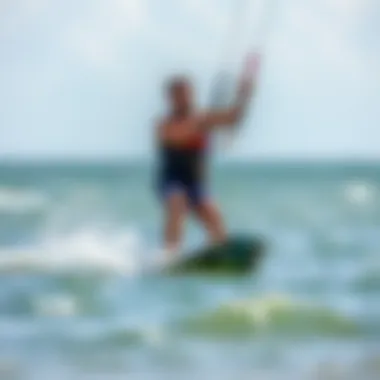
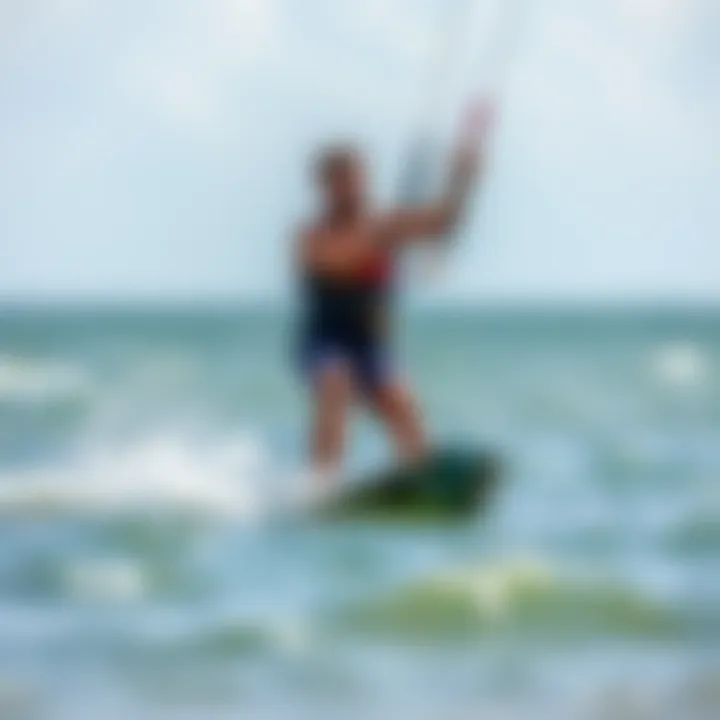
Getting a read on your environment is one of the first steps to achieving a smooth ride. Think of it as the foundation of a house; without a solid base, everything else is shaky. The key here is to observe. Look for consistent wind directions, check how other riders engage with the elements, and be wary of any potential hazards nearby. Small waves might look inviting, but they can create turbulence.
- Wind Indicators: Notice flags, trees, and water patterns. These natural markers give you hints about wind strength and direction.
- Tide and Current: Higher or lower tides can impact your take-off and landing spots. Strong currents can either aid your ride or drag you into trouble.
- Weather Patterns: Keep an eye on weather changes. Sudden shifts can bring extra wind or rain, changing how you ride.
By paying attention to these aspects, you can better prepare for what the waters have in store, ensuring your ride remains straightforward and enjoyable.
Choosing the Right Spot
Location is everything in kiteboarding. Finding the right spot could easily elevate a good session into a memorable one. A proper spot will have safe launching and landing areas, moderate wind conditions, and minimal obstacles. Here’s how to make your choice:
- Accessibility: Choose a place that’s easy to get to without added stress. Ideal spots won't require complicated logistics.
- Space: Look for areas where you can safely launch without crowds. More room means fewer worries about colliding with other kiteboarders or swimmers.
- Wind Conditions: Select locations that frequently offer consistent winds, as gusty spots can complicate things. Areas with steady winds make it simpler to keep your kite out of the water.
- Local Rules: Familiarize yourself with local guidelines for kiteboarding. Some areas may have specific regulations or restrictions you need to observe to ride legally and safely.
"The right environment can turn a simple ride into pure bliss. Stay informed, and you’ll ride with confidence and ease."
Taking a moment to evaluate your surrounding can lead to a much more enjoyable riding experience. In kiteboarding, simplicity often lies not in technique, but in choosing the appropriate environment.
By understanding both your surroundings and carefully selecting the right spot, you build a solid framework for achieving the simple ride that kiteboarding is all about. This awareness lays down a smooth path, allowing you to focus more on enjoying the experience rather than constantly managing obstacles.
Safety and Maintenance
In the captivating world of kiteboarding, safety and maintenance play an indispensable role, whether you’re a wide-eyed beginner or a seasoned pro. Learning to ride simply doesn’t just hinge on mastering the kite; it’s equally vital to embrace the protocols and upkeep that keep you safe and your gear in top shape. With the unpredictable nature of wind and water, understanding safety measures can make the difference between a thrilling adventure and a monumental mishap. Maintaining your equipment is equally paramount; it ensures that every ride remains blissful instead of burdensome.
Personal Safety Guidelines
First on the agenda is knowing how to keep yourself safe while skimming over the waves. Think of safety guidelines as your kiteboarding compass; they help you navigate through risks that may otherwise trip you up. Here are some key pointers:
- Pre-Flight Check: Before you even think about launching, perform a thorough inspection of your equipment. Look for frayed lines, holes in the canopy, and proper inflation of your kite. Ensuring everything is in shipshape is your first line of defense.
- Know Your Limits: Always be aware of your skill level relative to the conditions. If the wind is gusty or excessively strong for your ability, it’s wiser to wait for a more manageable day.
- Wear Safety Gear: Harnesses and helmets may feel cumbersome, but they can save your skin. Safety harnesses give you a secure ride, while a helmet can protect your noggin in the event of falls or collisions.
- Emergency Procedures: Familiarize yourself with emergency protocols, whether it’s how to self-rescue or signaling for help. Knowing what to do if the tide turns (sometimes literally) ensures you can remain calm amid chaos.
"In kiteboarding, preparation is your best friend; it guards you against the elements that may surprise you."
Caring for Your Equipment
Now, let’s shift the focus to the beloved gear that carries you across the water. Proper maintenance is not just about making your equipment last longer; it's also about keeping your rides enjoyable and safe. Here are essential maintenance tips:
- Rinse After Use: After your session, give your kite, bar, and board a good rinse with fresh water. Salts and sand can degrade materials and lead to premature wear and tear.
- Dry Thoroughly: Make sure to fully dry your gear before stowing it away. Excess moisture can lead to mold and mildew, especially if you store it in a dark place.
- Store Correctly: When not in use, it’s crucial to store your equipment in a cool, dry area away from direct sunlight. UV rays can weaken the fabric and materials over time.
- Regular Inspections: Just as you’d go for a check-up at the doctor, your kiteboarding equipment needs regular inspections, too. Look for any signs of wear, such as cracks in the board or soft spots in the kite, and replace parts when needed.
- Consult the Experts: Make use of professional repair services for any significant damage. Attempting to patch things up on your own can lead to further issues down the line.
Safeguarding your well-being and maintaining your equipment is fundamental to fully enjoying the alluring sport of kiteboarding. Ignoring these elements can turn your passion into a precarious pastime. So gear up, stay safe, and keep riding with ease!
Learning Resources and Community Support
Kiteboarding often seems like an individual sport, yet it thrives on community and shared knowledge. Tapping into the right learning resources and building a support network not only enhances one’s skill set, but it can also significantly uplift the overall kiteboarding experience. The simple pleasures of gliding across water can be amplified when one has access to guidance and camaraderie.
Finding Trusted Instructors
Selecting the right instructor is paramount to mastering the art of kiteboarding. Many riders make the mistake of thinking any instructor will do, but not all teachers are created equal. A trusted instructor can cut down your learning curve and ensure that bad habits don’t form early on. Look for instructors who are certified by recognized organizations such as the International Kiteboarding Organization (IKO) or the British Kitesports Association (BKSA). These certifications are hallmarks of quality training.
When searching for instructors, also consider their teaching style. Some may be more hands-on, while others adopt a laid-back approach. It’s crucial to find someone who resonates with your preferred learning pace and personality. Remember, kiteboarding can be intimidating for newcomers; a supportive teacher can make a world of difference.
Key Points to Consider When Choosing An Instructor:
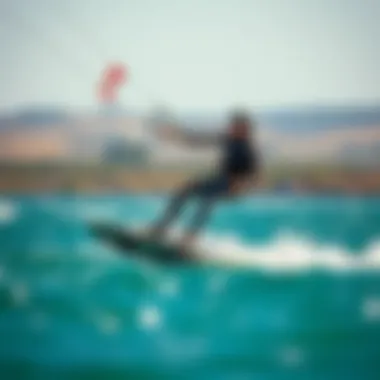
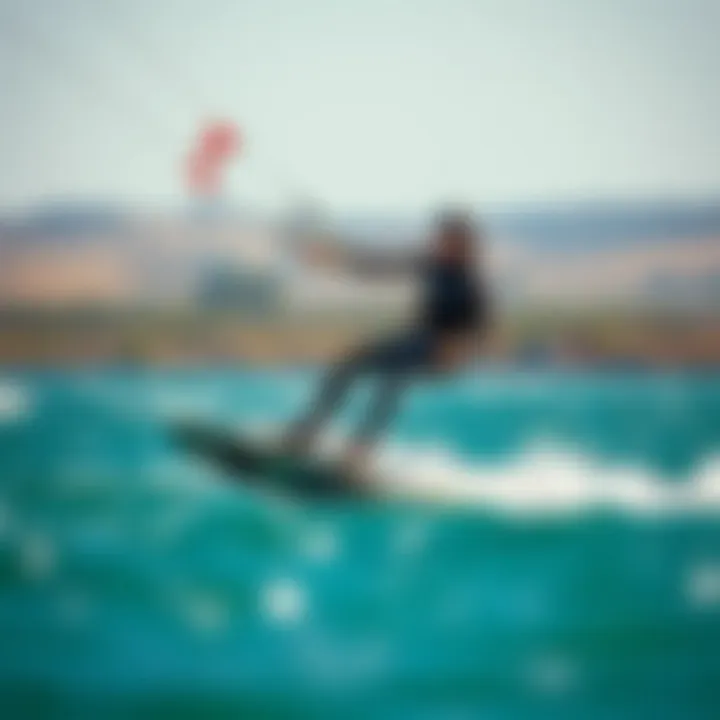
- Certifications: Ensure they are certified.
- Experience: Ask how long they've been teaching.
- Reviews: Check online reviews or ask previous students.
- Personal Interaction: Feel comfortable with your instructor for effective learning.
Ultimately, the bond formed between instructor and student lays the groundwork for a successful journey into kiteboarding.
Building a Network Among Riders
Establishing connections with fellow kiteboarders can fortify your learning and give you resources outside of formal lessons. Riding together allows for shared tips and encouragement. The simple act of watching someone else navigate a tricky maneuver can open your eyes to new techniques you may not have considered.
Local kiteboarding clubs and community groups are fantastic starting points. Engaging in meet-ups or local competitions fosters friendships and mentorship opportunities. This kind of networking promotes an exchange of ideas, making everyone in the group better riders. Various online platforms, like Reddit, Facebook, or even well-curated forums, provide spaces to connect, share experiences, or ask for advice.
Benefits of Building a Riding Community:
- Shared Knowledge: Gain insights from more experienced riders.
- Moral Support: Push each other to overcome challenges more effectively.
- Motivation: Riding with others keeps the enthusiasm alive.
- Resource Sharing: Access to tips on gear, locations, and techniques.
The Path to Mastery
Reaching proficiency in kiteboarding, especially through simplicity, is not merely a journey but an intricate dance between skill and understanding. Mastery does not spring from sheer ambition alone; it advocates for a holistic approach where every experience, however simple, contributes to a broader narrative of growth in the sport. For many, the allure of kiteboarding lies in the thrill of the ride. However, the real beauty unveils itself in the foundational aspects that enable simplicity—techniques that once grasped, will become second nature.
Transitioning from Simple to Complex
As you gain confidence in the basic moves—riding upwind, making smooth transitions, or even dialing in your jumps—the skillset you develop can then evolve into something more intricate. Just think about a cake; you start with a stable base and then add layers of frosting and fillings. Moving from a simple ride to catching air and performing tricks is much akin to that culinary art. Here, the emphasis on maintaining smoothness becomes paramount.
- Focus on Core Skills First: Ensure that your fundamentals are solid. Ride straight, keep your body balanced, and master your kite control before considering complex maneuvers.
- Incremental Learning: Each new trick or maneuver should be approached with patience. A common pitfall is attempting to rush the learning process—this often leads to frustration rather than satisfaction.
- Observe and Adapt: Watch others perform complex tricks that fascinate you. Understand the subtleties that make their attempts successful. Sometimes, it’s the small adjustments that can make a considerable difference.
- Practice, Practice, Practice: Regular, consistent practice not only hones your skills but also builds muscle memory, making advanced actions easier.
As you navigate this progression, remember that it’s all about enjoying the ride. The simple yet essential techniques will serve you well as you layer on more complexity.
Setting Realistic Goals
In any pursuit, setting achievable goals is crucial; this notion rings especially true for kiteboarding. The goals you set should be a blend of challenging yet attainable, steering clear of the unrealistic aspirations that can quickly dampen your enthusiasm. Here’s how to develop effective goals:
- Short-Term vs Long-Term: Tackle your aspirations in bite-sized pieces. Aiming to master a new trick in a week is ambitious and may lead to disappointment. Instead, break it down into milestones like mastering the pop or getting the rotation right.
- Document Your Progress: Keep a journal or log of your sessions. Record what worked and what didn't. This not only provides you with insights into your development but also builds a sense of accomplishment.
- Embrace Failures: Not every session will lead to a breakthrough, and that’s okay. Understand that failures are stepping stones toward success. It’s a part of the learning curve.
- Share Your Goals with Others: Connecting with fellow kiteboarders can promote accountability. Share your targets with friends or instructors who can provide encouragement and tips along the way.
Setting realistic goals creates a structure to your learning journey, promoting a constructive mindset that emphasizes both progress and satisfaction. This balance allows you to relish in each ride, grounding yourself in the essence of kiteboarding.
"Simplicity is the ultimate sophistication."
This adage rings especially true in kiteboarding, where mastering the 'simple ride' can lead to systematic improvement and deeper appreciation for the sport.
Closure
Simplicity in kiteboarding shouldn't be seen merely as an introductory concept for beginners; rather, it is a cornerstone that facilitates a deeper appreciation for the sport. When riders prioritize simplicity, they not only enhance their own proficiency but also pave the way for others in the community to experience kiteboarding without the stress of complexity. In essence, it's about returning to the roots of the sport, where the joyous sensation of gliding across the water is paramount.
Recapping the Importance of Simplicity
In the realm of kiteboarding, simplicity acts as both a guide and a companion on a rider's journey. By focusing on the core aspects—such as effective kite control and body positioning—one can achieve a level of fluidity that encourages growth. It’s vital to remember that a smooth ride doesn’t have to involve flashy tricks or high-powered kites. Instead, it thrives in the elegant union of rider, kite, and wind.
Here are some elements that reinforce this idea:
- Enhanced Focus: When riders reduce factors that may lead to distractions, they can concentrate on mastering the basics.
- Improved Performance: Mastery of fundamental techniques leads to more consistent and enjoyable rides.
- Community Engagement: Simplifying the learning process opens doors for social interactions, inspiring others to join in.
The art of riding simply serves to remind us that the thrill of kiteboarding lies in its essence, nurturing a more profound connection with the environment.
Encouraging a Lifelong Passion for Kiteboarding
For many enthusiasts, kiteboarding is more than just a pastime; it transforms into a lifelong passion. Engaging with the sport on a fundamental level not only offers immediate satisfaction but also sets the stage for enduring enjoyment. Starting with simple rides fosters a robust foundation that allows for greater exploration later on.
- Continuous Learning: Embracing simplicity allows for gradual evolution in skills. As riders grow more comfortable, they can build complexity in their maneuvers.
- Sustainable Growth: Cultivating passion for kiteboarding through simple experiences creates a long-term commitment, where riders are motivated to return to the water again and again.
- Cultural Connection: The kiteboarding community thrives on shared journeys. Riders who appreciate simplicity often find themselves bonding over tales of their initial experiences.
Ultimately, it’s vital to cultivate an enduring love for kiteboarding that blossoms from the joy of straightforward rides. It becomes a shared journey that not only impacts the individual but nourishes the entire kiteboarding community.







